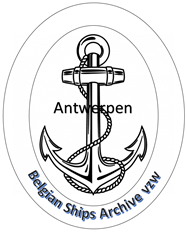Transporting iron ore by sea is a challenge.

"The cause of the sinking was not a collision, a freak storm or a problem caused by dangerous cargo – but a strange, sadly all-to-common phenomenon that is little understood by the general public: cargo liquefaction... Of the 19 crew members on board just one, a chief cook, managed to survive after eight hours in the water."
ShipTechnology on the sinking of the Bulk Jupiter, a supramax bulk carrier, at around 7am on 2 January 2015.
Let's start with size: Nothing is small in the world of iron ore: From big to huge! Very large ore carriers, Cape size bulkers, Panamax bulkers, Handymax and Supramax bulkers transport the two types of ore by sea (most of the trade is by sea).
This is a category of heavyweight boxers: The list starts with the world's leading mining companies: Vale, Rio Tinto, BHP, Fortescue, Anglo American, China Minmetals Corporation, Baosteel Group Co., Cleveland-Cliffs and ArcelorMittal. They charter some of the vessels they need. But the mines know about mining... So most of the cargo is handled by specialist bulk carriers: Oldendorff Carriers GmbH & Co. KG, Star Bulk, Pacific Basin Shipping Limited, Golden Ocean Group, Genco Shipping & Trading Limited, Navios Maritime Partners L.P., "K" line (Kawasaki Kisen Kaisha, Ltd), NYK Line, Seanergy Maritime Holdings Corp., Scorpio Group, Costamare, Danaos Shipping Co. Ltd and Cargill (if their bulkers can carry soybeans, they can carry iron ore).
Sea transport, as I have illustrated with just one case, can be quite challenging
Load stability and shifting: As a high-density cargo, iron ore poses significant stability challenges if not properly loaded and secured. Forces from waves, wind and ship motion during transit can cause the cargo to shift, creating dangerous imbalances that can lead to capsizing, especially in rough seas.

